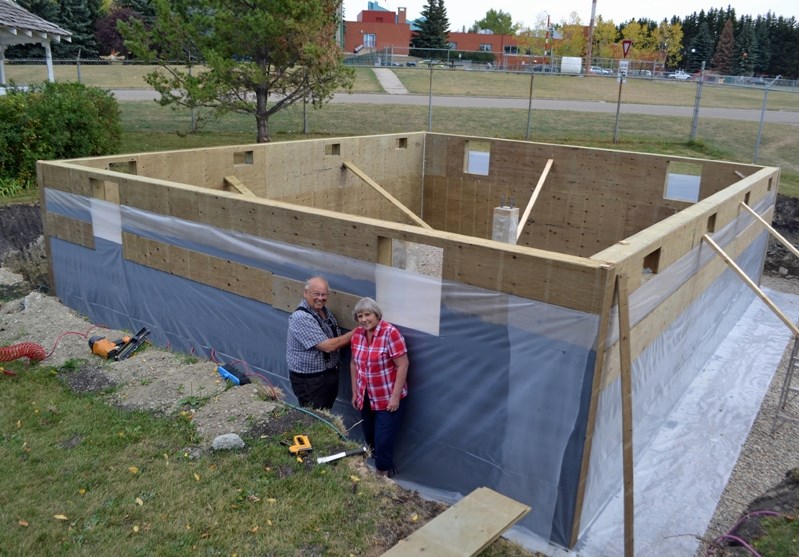INNISFAIL – Preparations for the arrival of the Sinclair House at the Innisfail and District Historical Village are nearing completion.
With the house expected to be moved sometime before the end of September, the foundation at the village for the new addition was set to be filled with sand last week.
Lawrence Gould, treasurer of the historical society, said last Monday (Sept. 11) that work had just finished on the foundation. The foundation includes cement footing at the bottom of the hole, with wooden walls reaching seven feet high.
“What we're building is not a basement, it's a foundation,” Gould said.
Work started in August on the foundation for the pioneer house of Isabella (Bella) Sinclair, the first Causcasion woman to have settled in Central Alberta. Lots of work has already been done on the 126-year-old house, including clearing it of asbestos, to prepare the home for its six-kilometre journey from its original acreage west of town to its new site at the village.
The move will bring to an end a two-year-long effort to arrange the move, including fundraising.
There was some concerns aired last week about the way the foundation is being constructed, with Albert Hannah of the Citizens for Innisfail group questioning the use of sand.
Hannah said he spoke to the engineer and gained a better understanding of the process, but blamed former CAO Helen Dietz for not allowing a concrete foundation.
“I didn't ever run across anybody doing anything like this,” he said of digging a hole and filling it with sand for a foundation. He speculated the general public wouldn't understand why a hole was dug and then filled.
He did acknowledge the work done is good.
Gould said the agreement between the town and the village was that no basement would be constructed, corroborated by town documents like the development permit issued in June.
Last May, town council unanimously approved an administration recommendation to give the historical society $10,000 immediately after the Sinclair House is successfully moved to the village. The town also told society officials that no full basement was allowed at the planned site immediately east of the Bowden train station, noting the shallow depth of utilities, and that the property is owned by the town and if for any reason another development was necessary in that area it did not want to deal with the onerous task of removing a full basement.
“There's no surprises here,” Gould said.
The sand was to be added to the inside and the outside, which Gould said provides lateral support for the foundation.
Last week, Frank Colosimo, the town's director of operational services, said he visited the site and said the historical society was satisfactorily meeting all development and building requirements set by the town.
Lawrence Gould, treasurer of the Innisfail and District Historical Society
"What we're building is not a basement, it's a foundation."



